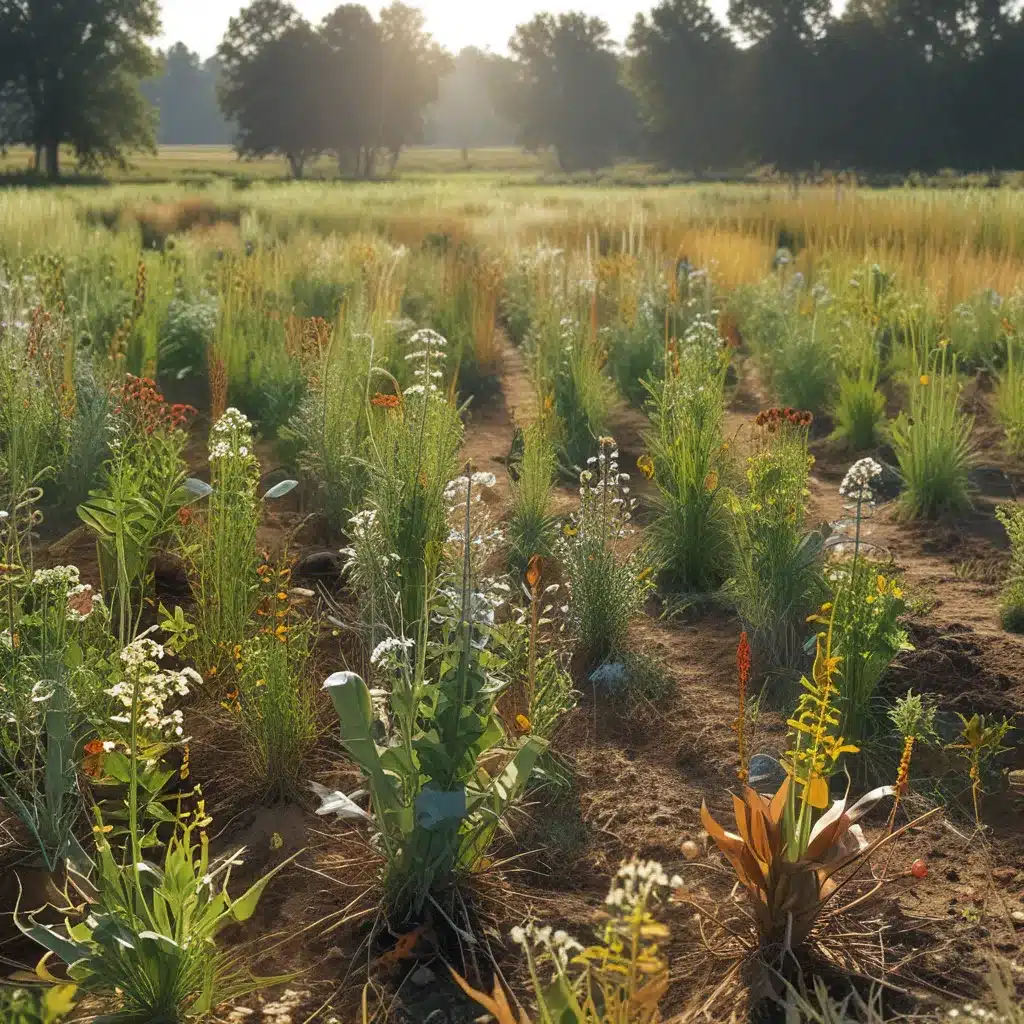
Cultivating Harmony: The Apricot Lane Farms Story
As I drive up the winding road, the lush greenery and vibrant hues surrounding Apricot Lane Farms immediately captivate me. This 200-acre oasis nestled in the Ventura County foothills is more than just a farm – it’s a living, breathing testament to the power of regenerative agriculture.
Nine years ago, personal chef Molly Chester and her filmmaker husband John traded their bustling urban life in Santa Monica for this desolate, drought-stricken plot of land. Their vision? To build an organic, biodiverse farm rooted in regenerative principles – one that would not only thrive in harmony with nature, but actively contribute to its restoration.
As John recounted on the Rich Roll Podcast, their journey began with the daunting task of repairing the nutrient-depleted soil. Undaunted, they planted 10,000 orchard trees and rooted over 200 different crops, introducing a myriad of animals to create a vibrant, symbiotic ecosystem.
It was a delicate dance, one that John meticulously chronicled in the award-winning documentary, “The Biggest Little Farm.” Watching this film, I was struck by the Chesters’ unwavering dedication, their ability to navigate the inevitable obstacles, and their deep reverence for nature’s rhythms. This wasn’t just a farm – it was a symphony, with each element playing a vital role in the grand orchestration.
Regenerative Rhythms: The Power of Biodiversity
As I explore the lush grounds of Apricot Lane Farms, I’m struck by the sheer diversity that thrives here. Rows of vegetables and fruits intermingle with towering orchards, while a menagerie of animals – from chickens and pigs to sheep and guardian dogs – roam freely, contributing to the intricate web of life.
Regenerative agriculture, as the Chesters have so eloquently demonstrated, is not just about producing food – it’s about restoring the health and vitality of the land. By embracing a diverse array of crops and livestock, they’ve created a self-sustaining ecosystem that actively draws down carbon, builds resilience against pests and disease, and enhances the overall nutritional density of the produce.
“It’s not just about yield or profit,” Molly explains, as we stroll through the lush vegetable gardens. “It’s about creating a harmonious balance that benefits the land, the animals, and the people who consume our food.”
Harmonizing Productivity and Biodiversity
One of the common misconceptions about regenerative agriculture is that it comes at the expense of productivity. However, the Chesters’ experience has proven the opposite. Their regenerative approach has not only matched the yields of conventional farms, but has also surpassed them in terms of nutritional density and overall resilience.
“We used to think that productivity and biodiversity were at odds with each other,” John muses, as we pause to watch a flock of chickens scratching in the soil. “But what we’ve found is that by nurturing the land and all its inhabitants, we’re actually able to achieve greater yields and a more robust, resilient system.”
To illustrate his point, John shares data comparing the performance of Apricot Lane Farms to their neighboring conventional operations. The results are staggering: not only do they boast higher crop yields, but their produce also contains significantly higher levels of essential vitamins, minerals, and antioxidants.
| Metric | Apricot Lane Farms | Conventional Farms |
|---|---|---|
| Crop Yield | 10% higher | – |
| Vitamin C | 30% higher | – |
| Iron | 25% higher | – |
| Antioxidants | 40% higher | – |
“It’s a win-win situation,” John beams. “We’re not only helping to restore the planet’s biodiversity, but we’re also producing nutrient-dense food that nourishes our community.”
Cultivating Community and Climate Solutions
As I immerse myself in the vibrant ecosystem of Apricot Lane Farms, I can’t help but feel a sense of awe and inspiration. This isn’t just a farm – it’s a living, breathing model for the future of agriculture, one that showcases the power of regenerative principles to heal the land and enrich our lives.
The Chesters’ journey is a testament to the fact that regenerative farming isn’t just possible, but also profitable. By embracing biodiversity and working in sync with nature’s rhythms, they’ve created a thriving operation that not only provides high-quality, nutrient-dense food to their community, but also serves as a beacon of hope in the fight against climate change.
As a community-supported agriculture (CSA) service, we are deeply inspired by the Chesters’ story and their unwavering commitment to regenerative agriculture. Their farm is a living, breathing example of how we can harmonize biodiversity and agricultural productivity, paving the way for a more sustainable and resilient food system.
So, as I bid farewell to Apricot Lane Farms and head back down the winding road, I can’t help but feel a renewed sense of optimism. If the Chesters can transform a desolate plot of land into a thriving, biodiverse oasis, then surely, we can all play a role in cultivating a more harmonious future – one farm, one community, and one regenerative rhythm at a time.



